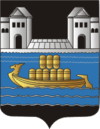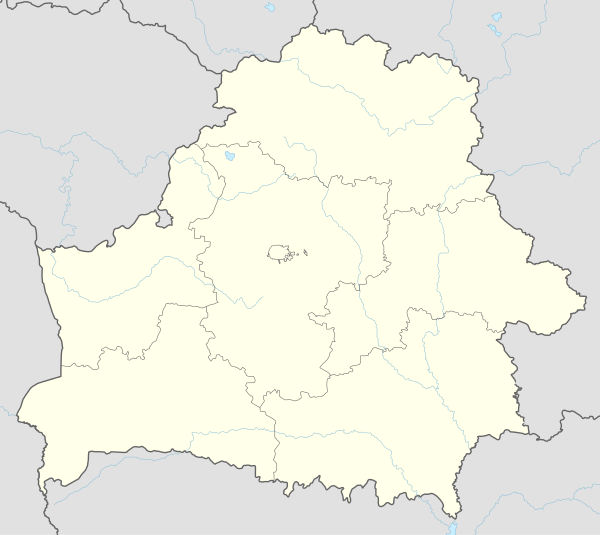Davyd-Haradok
Davyd-Haradok (Belarusian: Давыд-Гарадок, [daˈvɨd ɣaraˈdok]; Russian: Давид-Городок, Polish: Dawidgródek) is a city in the southwestern Belarusian voblast (province) of Brest. It has 7,681 inhabitants (2006 estimate).
Davyd-Haradok Давыд-Гарадок | |
|---|---|
 Coat of arms | |
 Davyd-Haradok Location in Belarus | |
| Coordinates: 52°3′20″N 27°12′50″E | |
| Country | |
| Region | Brest Region |
| District | Stolin Raion |
| Mentioned | 1100 |
| Population (2006) | |
| • Total | 7,681 |
| Time zone | UTC+2 (EET) |
| • Summer (DST) | UTC+3 (EEST) |
| Postal code | 225540 |
| Area code(s) | +375 2139 |
| License plate | 1 |
History
Within the Grand Duchy of Lithuania, Davyd-Haradok was part of Brest Litovsk Voivodeship. On older maps, it can be found written as Gorodec and lying nearly halfway between Brest-Litovsk and Pinsk. In 1793, Davyd-Haradok was acquired by the Russian Empire in the course of the Second Partition of Poland.
As a result of the 18 March 1921 Peace of Riga between Poland on the one side and Soviet Russia and Soviet Ukraine on the other side defined Davyd-Haradok (Dawidgródek) was part of Poland in the interwar period. The USSR retook the town in 1939.
In 1940, more than a third of the total population was Jewish, 4,350 Jews.
During World War II, Davyd-Haradok was under German occupation from 7 July 1941 until 9 July 1944. On August 10, 1941, 3,000 Jews older than 14 years old were murdered in a mass execution perpetrated by an Einsatzgruppen unit consisting of Germans and their collaborators.[1]
Survivors were imprisoned in a ghetto where they were forced to perform forced labour and suffered harsh living conditions, many deaths. On 10 September 1942, 1,263 remaining inhabitants of the ghetto, the vast majority women and children, were murdered. About a hundred of them managed to escape to the forest.[2]
External links
- Photos on Radzima.org
- Memorial for the Jewish population murdered during World War 2
- Davyd-Haradok, Belarus at JewishGen
